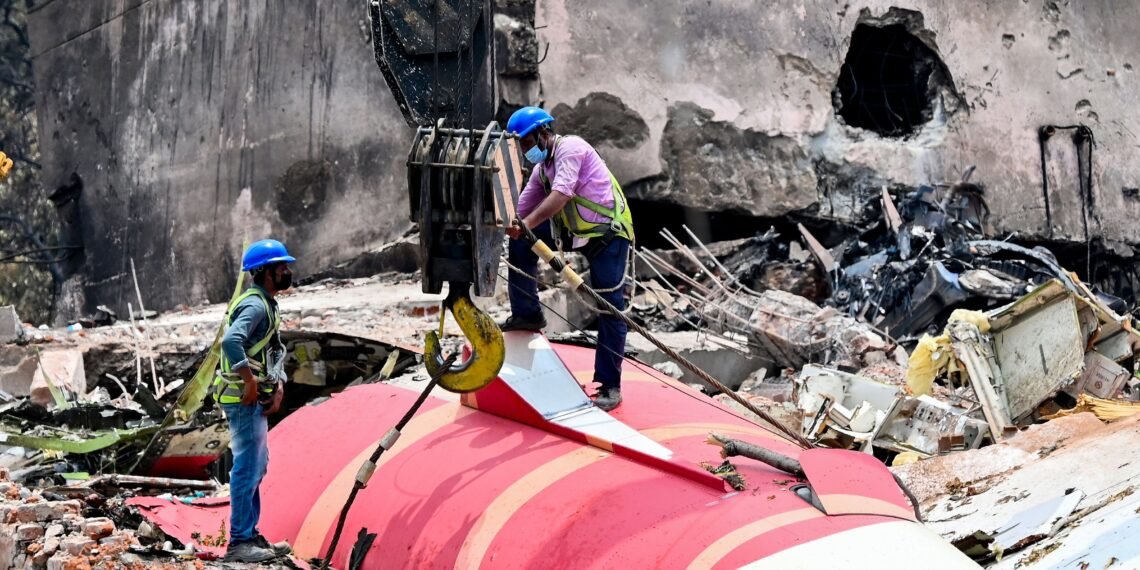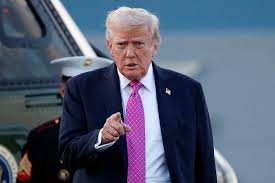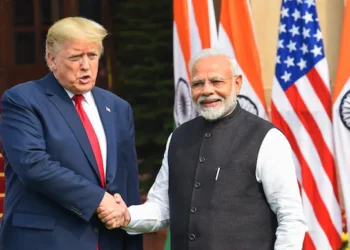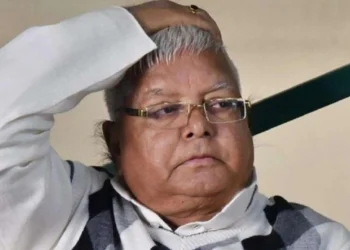The cockpit voice recorder of AI-171 has sparked a debate—did the pilots make a fatal error, or are they being scapegoated for design flaws Boeing knew about?
BY Navin Upadhyay
New Delhi | July 13, 2025
As questions mount over the crash of Air India Flight AI-171, a fierce debate has erupted over the role of the pilots and whether the preliminary investigation is pointing fingers too quickly. While investigators suggest the crew may have inadvertently shut off both fuel supply switches—leading to a catastrophic engine failure moments after takeoff—aviation unions and independent experts are warning against a rush to judgment. Their concern: that the pilots are being blamed to protect Boeing, the manufacturer of the ill-fated 787 Dreamliner.
According to the Aircraft Accident Investigation Bureau’s preliminary report, flight data shows the fuel shut-off valves were manually turned off one after the other in the seconds leading up to the crash. The cockpit voice recorder captures a brief exchange between the pilots: Captain Sumeet Sabharwal is heard asking First Officer Clive Kunder, “Why did you shut off the fuel valves?” to which Kunder replies, “I didn’t.” With both engines winding down, the plane lost altitude and crashed into a residential area near Ahmedabad airport, killing all 260 on board.
READ: Counterpoint: Push Back Against AI-171 Pilot Suicide Theory
The implication of cockpit error—or possibly deliberate action—has set off a storm of controversy. The Indian Commercial Pilots’ Association called the report “incomplete and biased” and demanded an independent inquiry with international oversight. “Blaming the pilots before the full facts are known is irresponsible and damaging,” the union said in a statement.
These two pilots can’t defend themselves, they’re easy scapegoats for billion dollar corporations to throw under the bus (being dead makes it easier!). There is more than meets the eye for Air India 171. Western Media, Indian Media and possibly the AAIB are compromised. pic.twitter.com/mL7lVrmehx
— Nishant Gambhir (@madnish30) July 12, 2025
What has further intensified suspicion is Aircraft manufacturers’ documented history of attempting to deflect blame onto pilots in earlier disasters involving its aircraft.
In 2018 and 2019, two Boeing 737 MAX planes—operated by Lion Air and Ethiopian Airlines—crashed in separate incidents, killing a total of 346 people. In both cases, Boeing initially suggested the crashes were due to poor pilot training, especially since the crews were based in developing countries. However, later investigations revealed that the crashes were caused by a flawed software system known as MCAS, which repeatedly pushed the aircraft’s nose down despite pilot input. Boeing had failed to properly disclose the existence of MCAS to operators and had lobbied regulators to skip mandatory simulator training. Internal emails revealed a culture within Boeing that dismissed safety concerns and ridiculed oversight.
READ: Srinagar Admin Bars Gatherings on Martyrs’ Day
Another example frequently cited by safety advocates is the 2009 crash of Air France Flight 447. Media reports initially blamed the pilots for stalling the aircraft mid-flight. But the official inquiry later found that the plane’s pitot tubes had iced over, feeding false airspeed readings to the system. The pilots were faced with contradictory data and had received insufficient training to deal with such a scenario. The final cause was found to be a combination of equipment failure and training deficiencies—rather than pure human error.
Even further back, the 1996 crash of TWA Flight 800 off the coast of Long Island drew allegations of cover-up. While the official explanation cited a center fuel tank explosion due to faulty wiring, whistleblowers alleged that evidence pointing to a possible missile strike had been ignored or suppressed, raising questions about investigative transparency.
In the case of AI-171, there is another factor being overlooked in public discourse. In 2018, the US Federal Aviation Administration issued a directive warning of a design flaw in the Boeing 787’s fuel shut-off switch guards, which could lead to accidental engagement. It remains unclear whether Boeing fixed the issue or whether Air India implemented the recommended safety measures. The preliminary report makes no mention of this known vulnerability.
The AAIB of India has released the preliminary report of the Air India #AI171 #VTANB
Prima facie the report indicates that the fuel control switch “transitioned” from Run to Cutoff one second apart, when the aircraft moved from ground to air.
The Pilots are heard asking each… pic.twitter.com/EM4JCC7Epc
— Sanjay Lazar (@sjlazars) July 11, 2025
Both Captain Sabharwal and First Officer Kunder had clean records, were medically cleared, and had logged thousands of flying hours. Colleagues describe Sabharwal as methodical and highly experienced; Kunder, just 32, was known for his dedication and was preparing for his upcoming wedding. Their families and peers say it’s too early to attribute blame to two professionals who, in their final seconds, were trying to save the lives of everyone on board.
Critics argue that prematurely pinning the crash on human error allows Boeing, Air India, and regulators to escape deeper scrutiny. “It’s easier to blame two dead men than to confront the possibility of design failures or ignored warnings,” said a former DGCA official on condition of anonymity.
READ: Manipur Jail Violates Kuki Detainees’ Rights, Alleges KOHUR
The final report is still months away. Until then, pilot unions and safety watchdogs are urging investigators to consider all possibilities, including those that might put responsibility on powerful entities. If past cases are any guide, such scrutiny is not only warranted—it may be essential to uncovering the truth.
A History of Deflection
Case 1: The 737 MAX Scandals
In 2018 and 2019, two Boeing 737 MAX aircraft crashed within five months—Lion Air Flight 610 in Indonesia and Ethiopian Airlines Flight 302. Together, they killed 346 people.
Boeing’s response was swift—and strategic. The narrative turned to “foreign pilot incompetence” and lack of simulator training. Boeing downplayed the presence and function of its new MCAS software, which had repeatedly pushed the nose of the aircraft downward, overriding pilot commands.
But independent investigations—and eventually, U.S. congressional hearings—revealed a different story. Boeing had:
- Failed to disclose MCAS to airlines or regulators
- Pressured the FAA to streamline certification
- Hidden internal concerns about safety
- Mocked safety protocols in internal emails
The crisis grounded the global MAX fleet, cost Boeing billions, and destroyed public trust. But the damage to the reputations of the foreign pilots had already been done.
Case 2: Air France 447
In 2009, an Airbus A330 operated by Air France crashed into the Atlantic en route from Rio to Paris, killing all 228 aboard. While not a Boeing aircraft, the case mirrors the same early blame game: pilots were swiftly accused of stalling the plane.
But later findings revealed that pitot tubes had frozen, feeding erratic speed data to the aircraft’s autopilot. The pilots weren’t trained to handle this very scenario. The crash resulted from a mix of technical malfunction and inadequate training—not reckless flying. And yet, pilot error dominated headlines for months.
Case 3: TWA Flight 800
In 1996, TWA Flight 800 exploded midair off Long Island. The official verdict was a center fuel tank explosion caused by faulty wiring. But multiple eyewitnesses reported seeing what they believed was a missile strike. Investigators and whistleblowers alleged that evidence was selectively presented or dismissed—possibly to avoid political fallout or protect contractors.
Again, not a Boeing case directly, but one that shows how crash investigations can be manipulated to reach politically or financially “safe” conclusions.
These catastrophic events underscore a vital lesson in aviation safety: when an accident occurs, it’s a symptom of a systemic breakdown, not merely an isolated error by individuals. While pilot actions are undeniably a part of any flight’s dynamics, a narrow focus on “pilot error” in the immediate aftermath of a crash can be misleading and dangerous.
True progress in aviation safety comes from thorough, unbiased investigations that delve into every contributing factor – from aircraft design and software logic to maintenance practices, training protocols, and regulatory frameworks. Attempts by manufacturers or airlines to prematurely shift blame onto pilots not only disrespect the lives lost but also hinder the crucial process of identifying and rectifying the root causes that prevent future tragedies. The ultimate goal of accident investigation is not to assign blame, but to understand why something happened, so it never happens again.












